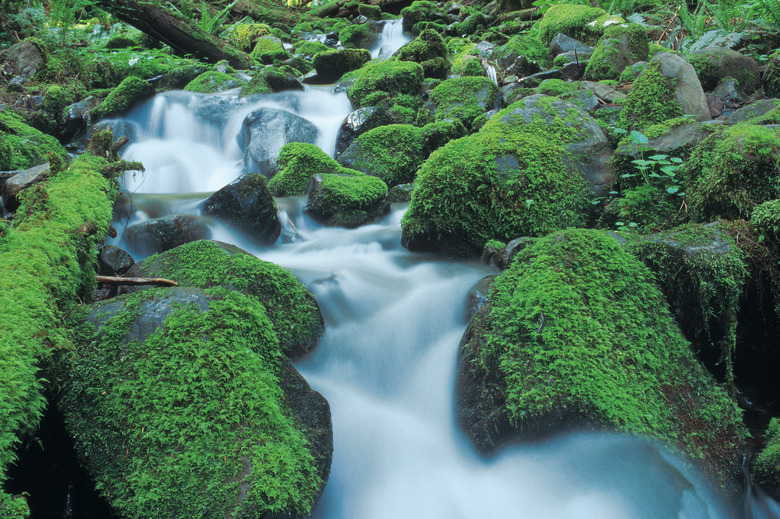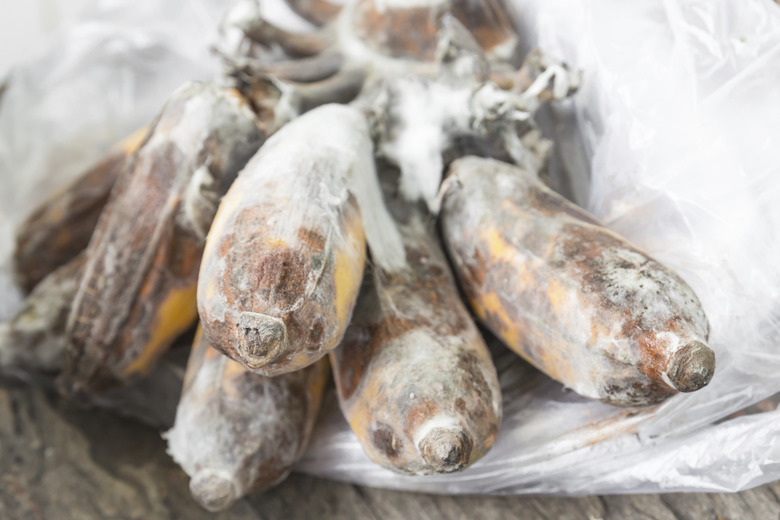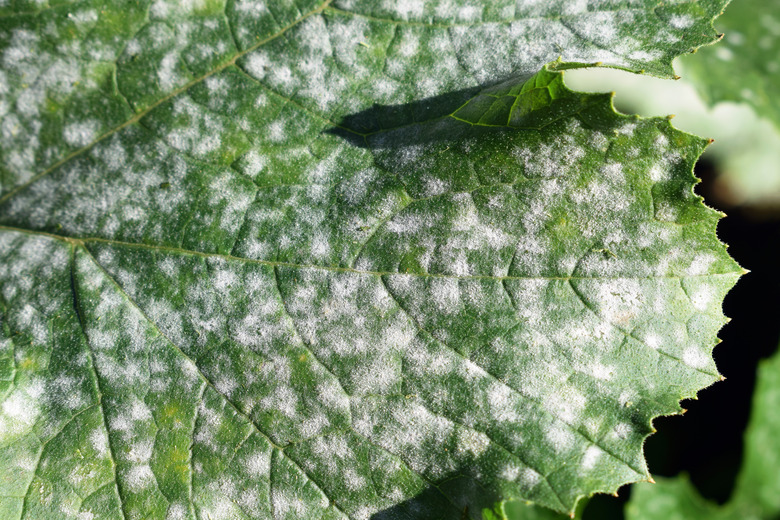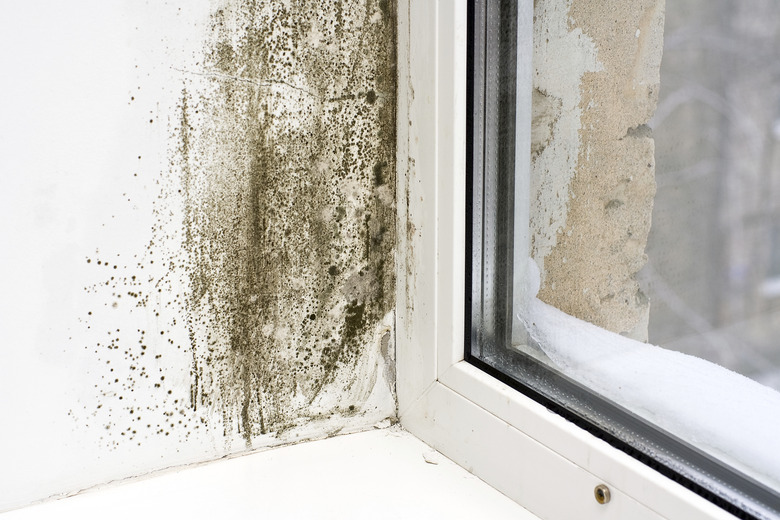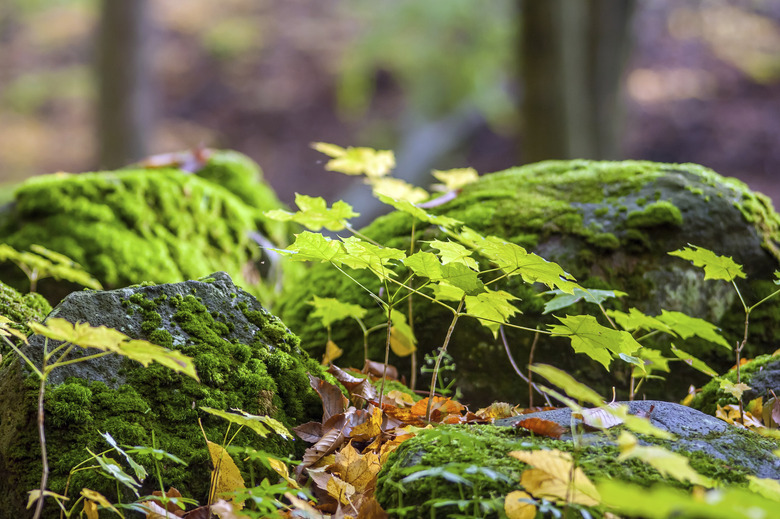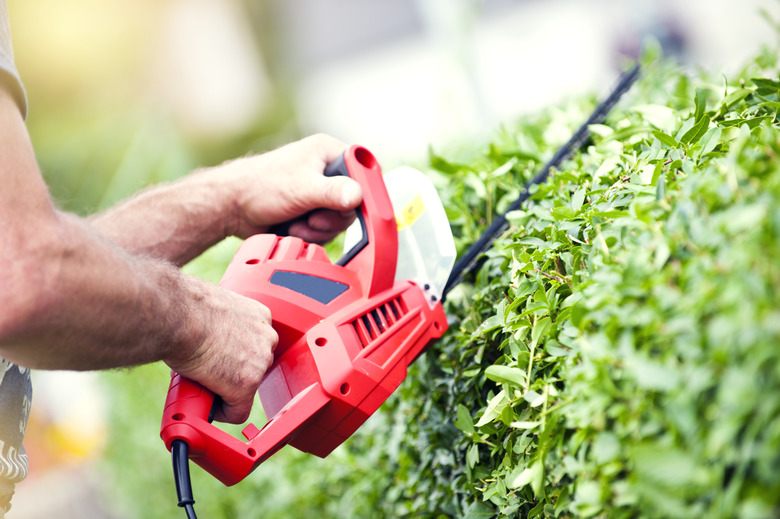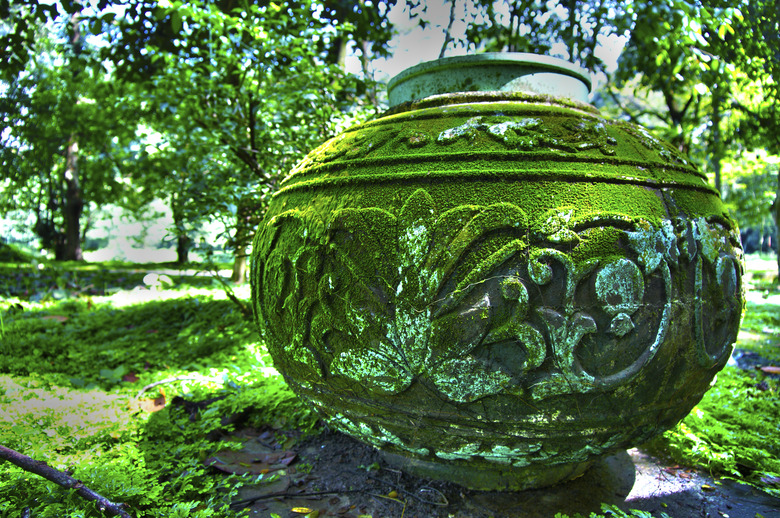What Is The Difference Between Moss And Mold?
Moss and mold may look similar, but they are from different parts of life's kingdom. Moss is a plant that converts sunlight and dissolved soil minerals into the energy it needs to grow and reproduce. Mold is a fungus, neither plant nor animal, and distantly related to mushrooms. It converts decaying organic matter into the energy the mold needs to live and reproduce. Unlike moss, mold doesn't need sunlight to live.
Is Mold a Plant?
In a word, no; mold is not a plant but a fungus. The difference between mold and fungus is that mold is only one type of fungal organism. Mold in nature helps with the decomposition of dead plants and animals. It reproduces when its spores find organic materials, comfortably warm temperatures and moisture or high humidity. The University of Central Florida notes that mold needs considerably moist conditions to flourish and reproduce. Greenish, gray or black blotches of mold commonly appear on garden plants, foodstuffs, walls, floors and textiles.
Mold often has a characteristic musty odor. Some mold species can be toxic if inhaled or ingested. Although fungicidal sprays kill mold, cultural controls probably can handle all but the most severe mold problems in your garden and home.
Plant Mold Controls
A mold infestation in your indoor or outdoor garden shows up in wilting plants that have developed dark, circular lesions. These lesions eventually form a dense, cottony white or gray growth that ultimately rots fruits and can kill the infected plants. If you see diseased plants, remove and destroy them immediately. Remove the soil on which the diseased plants grew, and replace it with clean, sterile soil.
A mold attack can be prevented by several methods, including planting in only well-ventilated areas and avoiding the crowding of plants. Water plants early in the day so the sunlight can dry them. Keep weeds down, too. Weeds can harbor mold spores and spread mold to desirable plants. Remove and destroy all plant residue after harvesting to deny mold spores a place to spend winter.
Other Mold Measures
Homeowners can increase ventilation to control mold on plants and in other areas inside their homes. Set your air conditioner so its compressor and fan turn off simultaneously. Keep interior doors open to equalize interior air pressure throughout the house, and minimize infiltration of hot, humid, outside air, which encourages mold growth.
A moist bathroom is prone to mold growth; sanitizing the bathroom with commercial disinfectants, promoting air circulation with an exhaust fan and keeping the bathroom door open when the room is not in use can help prevent mold. Keep air conditioner filters clean, too.
Keeping gutters and downspouts clean and direct their outflow away from the house. Fix interior plumbing leaks and exterior leaks that allow rainwater infiltration. Ensure kitchen and bathroom exhaust vents lead outside and are not blocked. Maintaining your home's overall humidity below 70 percent will deter mold growth.
About Moss
The answer to the question of "Is moss a fungus like mold?" is no. Moss is a simple plant, and thousands of species exist. Each kind of moss lacks the deep roots, stems and seed-forming parts of more complex plants. Moss can reproduce sexually through spores or asexually by broken-off pieces. It grows best in permanently damp, acidic, compacted soil in medium to dense shade.
Most moss species form a thick green to brown carpet. Moss doesn't compete well with grasses, so it tends to grow in areas where grasses have difficulty becoming established.
Moss Control
Regrading a site to improve its drainage is one management option that the Oregon State University Extension Service recommends for controlling moss growth. Because moss doesn't grow well in bright sunlight, trimming bushes and trees to admit more sunlight may encourage turf grasses to grow in place of moss. After you increase the sunlight to a mossy area, rake out its moss, smooth its soil and sow grass seeds or lay sod on the site.
Nurture for Moss
The alternative to destroying moss is nurturing it. Moss can fill lawn voids where nothing else thrives, such as in dim spaces under large, shady trees. If an area already has some moss, then remove its existing grass, weeds and debris. Rake the area smooth, tamp it lightly and let the moss spread on its own.
Moss can be transplanted from an area with conditions similar to those in your yard. Use a spade to dig up blocks of moss sod the size of your outstretched hand. Press the blocks into the desired place, and water the site well. Repeat watering whenever the ground surface dries.
